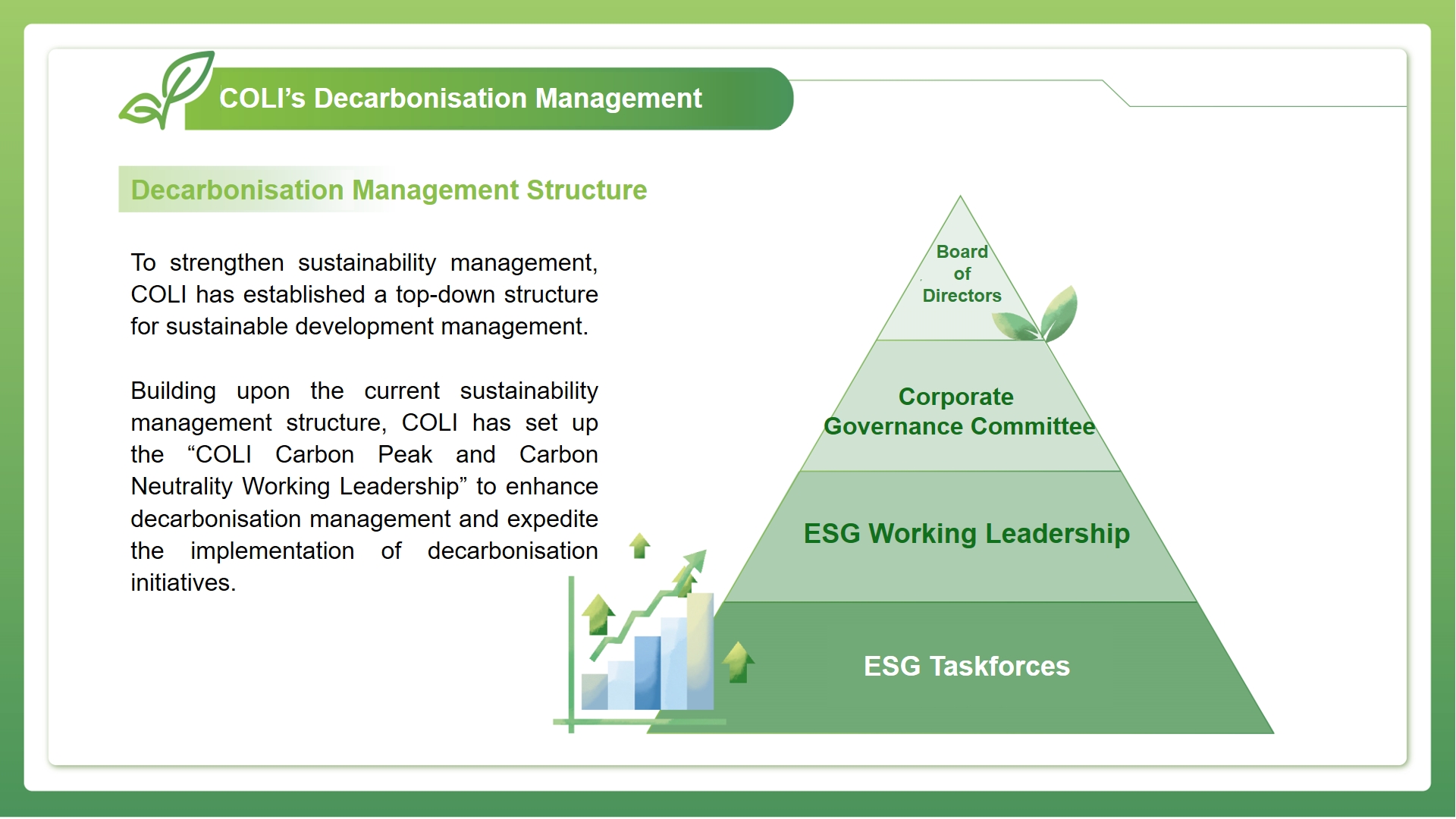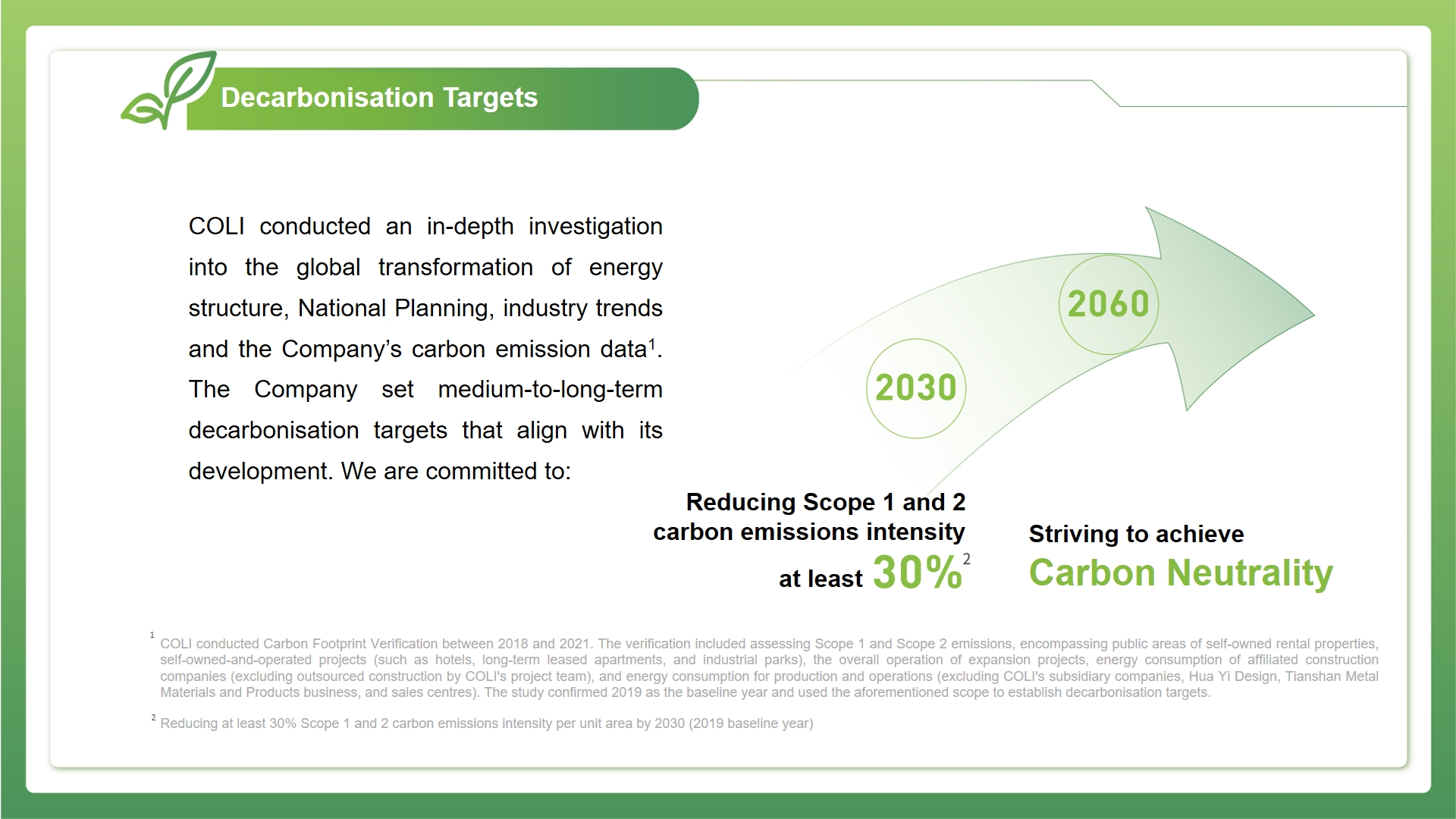Carbon Neutrality Targets and Management
Responding to China’s strategic plans of “striving to peak carbon dioxide emissions before 2030 and achieving carbon neutrality before 2060”, the State Council’s “Action Plan for Carbon Dioxide Emissions to Peak Before 2030”, the State-owned Assets Supervision and Administration Commission of the State Council’s “Working Guidance for Carbon Dioxide Peaking and Carbon Neutrality in Full and Faithful Implementation of the New Development Philosophy”, various provinces, cities and regions have gradually implemented policies related to dual carbon goals, and industries have also initiated multidimensional actions. The process of achieving carbon neutrality will involve extensive technological transformations across various fields. Through the exploration of technological and industrial trends, COLI actively conducts research and responds to future guideline requirements, embracing development opportunities and achieving transformation and upgrading.
Decarbonisation Management Structure
Based on the Sustainability Management Structure, COLI Carbon Peak and Carbon Neutrality Working Leadership was established to enhance the company’s decarbonisation management system and promote decarbonisation work in an effective manner.

Decarbonisation Targets and Commitments
COLI conducted an in-depth investigation into the global transformation of energy structure, National Planning, industry trends and the company’s carbon emission data. Based on this research, COLI set medium-to-long-term decarbonisation targets that align with its development. We are committed to reducing at least 30% Scope 1 and 2 carbon emissions intensity per unit area by 2030 (2019 baseline year), and striving to achieve carbon neutrality by 2060.
COLI conducted an in-depth investigation into the global transformation of energy structure, National Planning, industry trends and the company’s carbon emission data. Based on this research, COLI set medium-to-long-term decarbonisation targets that align with its development. We are committed to reducing at least 30% Scope 1 and 2 carbon emissions intensity per unit area by 2030 (2019 baseline year), and striving to achieve carbon neutrality by 2060.

Carbon Neutrality White Paper
In November 2023, COLI issued the inaugural “Carbon Neutrality White Paper”, disclosing the details of decarbonisation targets, carbon reduction action plans and strategies, pilot projects, and the overall planning blueprints of decarbonisation.
In November 2023, COLI issued the inaugural “Carbon Neutrality White Paper”, disclosing the details of decarbonisation targets, carbon reduction action plans and strategies, pilot projects, and the overall planning blueprints of decarbonisation.




